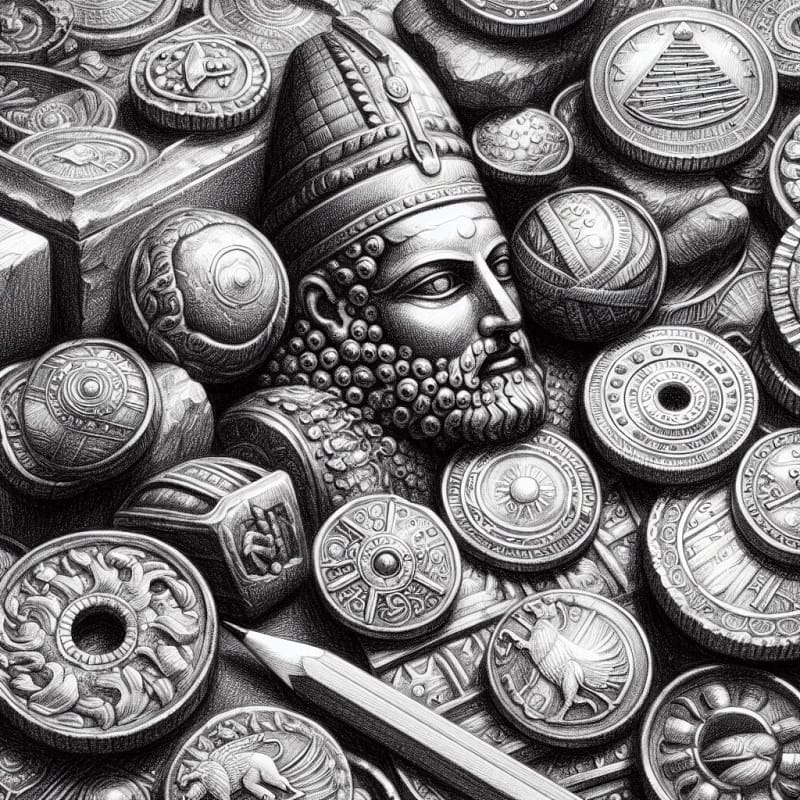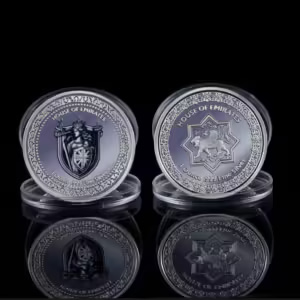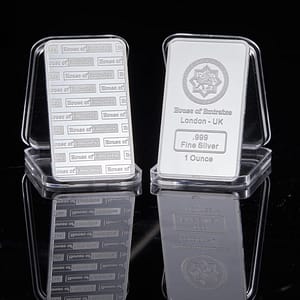By: Ahmad Saed Alzein, CEO of House of Emirates ® London – UK
Human civilization has been relying on currency since the dawn of history and ancient times, serving as a medium of exchange, a unit of account, and a store of value. Ancient civilizations used coins as their primary form of currency, while modern economies rely on paper money and digital transactions. Many questions have been raised about the economic, technological, and sociocultural factors that influenced currency evolution.
In this article I will be exploring the historical background surrounding ancient civilizations’ adoption of coins.
Trust and accessibility
The tangibility of coins was one of the primary reasons ancient civilizations preferred them. The composition of precious metals such as gold, silver, and bronze conferred intrinsic worth unlike paper currency, which can be easily copied, damaged, devalued and destroyed. Being able to check its worth through weight and purity instilled a sense of trust and confidence in the currency. In ancient times, paper money relied heavily on the credibility and stability of issuing authorities, which were not always guaranteed.
Portable and sturdy
Coins’ portability and toughness made them ideal for everyday transactions in ancient cultures. Coins were a convenient medium for trade unlike cumbersome barter systems where goods were directly exchanged. Small and light made it possible for people to move around and do business. Moreover, the robust nature of metal coins ensured their long-term viability in circulation, aiding in the stability of financial frameworks.
Authority and symbolic meaning
Ancient societies often used coins to reflect the authority and power of rulers or governing bodies. Political legitimacy and sovereignty were strengthened by the stamping of coins with images of rulers, deities, or national symbols. Controlling the production and distribution of coins allowed rulers to assert control over financial affairs and influence trade interactions with other civilizations. As a result, coins became potent symbols of statehood and cultural identity, shaping perceptions of wealth and prestige.
Technological constraints
Technological limitations associated with the production of paper money can be blamed for the widespread use of coins in ancient civilizations. Ancient societies were unable to mass-produce paper currency efficiently, unlike today’s sophisticated printing techniques. The intricate patterns and security protocols required for banknotes were beyond the technological capabilities of most ancient societies, limiting their acceptance as a viable alternative to coins. As a result, coins remained the predominant form of currency due to the simplicity and reliability of their production process.
Cultural traditions and customs
There were cultural norms and practices that influenced the adoption of coins in ancient societies. The first metal coins emerged in the kingdom of Lydia in the middle east in 546 BC, followed by silver shekels in ancient Mesopotamia. Over time, the use of coins became a fixture of societal norms and rituals, exerting an impact on economic practices and interpersonal interactions. Over time, the utilization of coins became a fixture of societal norms and rituals. Cultural preferences for metallic coins caused alternative forms of currency to encounter public resistance. All other attempts to introduce alternative forms of currency faced hostile pushback due to a deeply ingrained cultural preferences for precious metal coins.
Stability in the economy and uniformity in the marketplace
Coins played an important role in promoting economic stability and standardization within ancient civilizations. The adoption of uniformly minted coins facilitated uniformity in commerce, easing the complexities associated with barter and inconsistent forms of money. The recognized denominations of coins made it easy for merchants and consumers to evaluate the worth of goods and services, promoting openness and effectiveness in transactions. The risk of inflation and currency devaluation was mitigated by the intrinsic value of precious metals.
As we saw above, a mix of economic, technological, and cultural influences shaped the preference for precious metal coins over paper money in ancient societies. The tangible nature, portability, and symbolic significance of coins facilitated their widespread acceptance and use as monetary instruments. Their dominance in ancient economies was bolstered by technological limitations, cultural norms, and standardized coinage systems. The evolution of money has seen the rise of paper money and online transactions, but the legacy of coins remains, reminding us of the timeless significance of ancient monetary systems.





